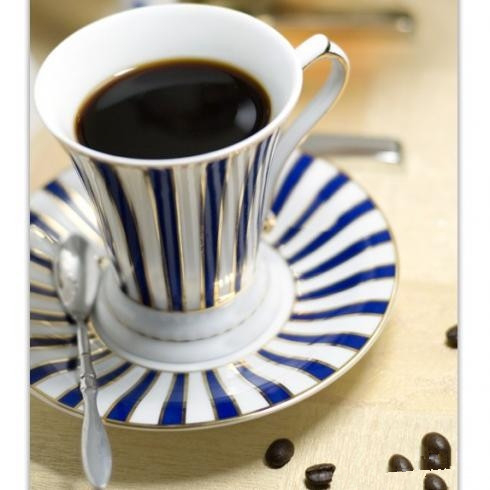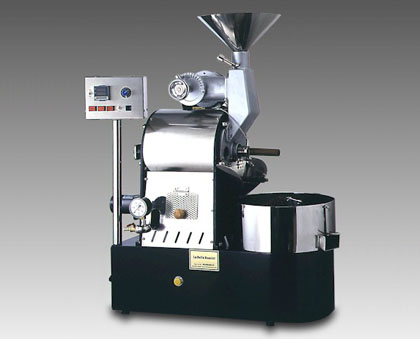Analysis of classic coffee varieties-to give you an in-depth understanding of the mysterious country of coffee
"Coffee" (the word comes from a small town in Ethiopia called kaffa, and in Greek "Kaweh" means "strength and passion". Tea, coffee and cocoa are called the three major drinks in the world. Coffee tree is a small evergreen tree of Rubiaceae. Coffee for daily consumption is made from coffee beans combined with various cooking utensils, and coffee beans refer to the nuts in the fruit of coffee trees, which are then roasted by appropriate roasting methods.
Blue Mountain (Blue Mountain Coffee)
It is a well-known coffee produced only in the Blue Mountain region of Jamaica in Central America, and only coffee grown in the Blue Mountain area above 1800 meters can be authorized to use the logo "Jamaican Blue Mountain Coffee (Blue Mountain Coffee)," accounting for 15% of Jamaica's total Blue Mountain Coffee production. The coffee grown between 457m and 1524 m is called alpine coffee (Jamaica High Mountain Supreme Coffee Beans), and the coffee grown between 274m and 457m is called Jamaican coffee (Jamaica Prime Coffee Beans). Blue Mountain Coffee has mellow, bitter slightly sweet, soft and smooth characteristics, and slightly sour taste, can make the taste more sensitive, taste its unique taste, is the best of coffee. The real Blue Mountain Coffee produces only 40,000 bags a year, and because Japan has always invested in the Jamaican coffee industry, most of the Blue Mountain Coffee is now owned by the Japanese, and they have also won the right to buy Blue Mountain Coffee. 90% of the Blue Mountain coffee is bought by the Japanese every year. Now, because the rest of the world can only get 10% of Blue Mountain, regardless of the price, Blue Mountain coffee is always in short supply. Cafes and hotels in China sell the so-called "Blue Mountain Coffee" for tens of yuan per cup. More than 99% of the coffee is not the real Jamaican Blue Mountain Coffee, but the Blue Mountain flavor coffee blended with beans from other places. The world-famous Jamaica Coffee Bureau (CIB) only gives four legal coffee farms, wallenford, jablum, Silver Hill and Moy Hall, to concentrate on the processing of blue mountain coffee beans, and all Jamaican blue mountain coffee is marked with the name of its processed farm on its outer packaging.
Moka (Mokha)
Some people say: in coffee, Blue Mountain can be king and mocha can be called queen. Mocha coffee has the most unique, richest and most fascinating complex flavors in the world: red wine, wild game, dried fruit, blueberries, grapes, cinnamon, tobacco, sweet spices, logs and even chocolate. no, no, no. Mocha coffee has a special taste and varied levels, like a woman's mood. When you taste it slowly, the feelings you can experience will not be repeated and change constantly. The more you taste, the more you drink a glass of red wine. Someone once described it this way: if Mexican coffee can be compared to dry white wine, then Yemeni mocha is Bordeaux wine. The real mocha coffee is produced in the Republic of Yemen in the southwest of the Arabian Peninsula. it grows on a steep hillside with an elevation of 900 to 2400 meters above sea level. it is also the oldest coffee in the world. This variety of beans is small and rich in aroma, with a unique sour and citrus aroma, more charming aroma, and mellow with intoxicating rich aftertaste, unique aroma and soft sour, sweet taste.
Latte (Latte)
The proportion of an authentic Italian latte is 70% milk, 20% milk and 10% coffee. Lattes have more milk and less coffee, which is very different from Cappuccino. The latte is extremely simple: pour nearly boiling milk into the freshly made espresso. In fact, there is no fixed rule on how much milk is added, and it can be freely mixed according to individual taste. If you add some frothy cold milk to the hot milk, it becomes an American latte. Starbucks American lattes are made in this way, with milk heated to 65 ℃ at the bottom, espresso in the middle, and a layer of cold milk foam no more than half a centimeter.
Cappuccino (Cappuccino)
Unlike a latte, there is more cappuccino coffee and less milk. On the basis of Italian espresso, add a thick layer of foaming milk to become a cappuccino. The traditional cappuccino is 1/3 espresso, 1/3 steamed milk and 1/3 foamed milk. Some cinnamon or chocolate powder can be added to the foam to prolong the foam stay.
Italian espresso (Espresso)
It usually takes 7 grams of coffee powder to make a cup. After 9 atmospheric pressure and 90 degrees Celsius, the strong coffee from 28ml to 30ml is extracted rapidly in a short time of 20 seconds. The most important thing about a successful Espresso is to see whether there is a thick brown-red oil foam "Cream" floating on the surface. The most important feature of Espresso is the cohesion of fragrance and taste. The general orthodox way of drinking is to add sugar, stir slightly, and drink it immediately. While enjoying the fragrant taste, caffeine intake is greatly reduced. In Italian espresso, do not add whipped cream or milk, just add two tablespoons of soft milk foam to the coffee, so it is a cup of macchiato. Maggie must drink it in one mouthful before she can taste it.
From: happy living
Important Notice :
前街咖啡 FrontStreet Coffee has moved to new addredd:
FrontStreet Coffee Address: 315,Donghua East Road,GuangZhou
Tel:020 38364473
- Prev

All kinds of coffee are brewed with different utensils to remove the special flavor.
Blue Mountain Coffee: this brewing method of French filter press can best show the original flavor of coffee beans, and high-quality coffee is very suitable for this brewing method. Its operating principle is to brew coffee directly with hot water and filter it with iron mesh, so it can extract almost all the substances that can be extracted, so it will form a cup of coffee with primitive and complex flavor. Kona Coffee: American Electric Coffee maker
- Next

The evolution history of coffee roaster
As early as the 13th century, the Arabs invented to put coffee beans in a pot, stir-fry them with fire, grind them into powder, and then brew coffee. The early Arabs liked to bake the beans shallowly and boil them with spices such as cardamom. Later, this coffee stir-frying method spread to Syria, Turkey and Egypt, where it was used to stir-fry the coffee black, then grind it into powder and add it.
Related
- What is the meaning of lactic acid fermentation with coffee bean treatment?
- How to judge the state of foam by sound?
- How does the latte pull out the unicorn pattern? Come to get for a little trick to improve the flower pull!
- Will flower pulling affect the taste of the latte?
- Do you know the history of coffee?
- The difference between honey treatment and sun washing what is raisin honey treatment?
- What kind of milk can a novice use to make coffee foam to keep the foam longer? The correct method and skills of milking tutorial sharing
- Why do washed coffee beans taste sour? Flavor characteristics of washed Coffee
- Introduction to the skill of how to practice the size and height of water injection around the circle of hand-brewed coffee
- How do beginners practice coffee flower drawing from scratch?

